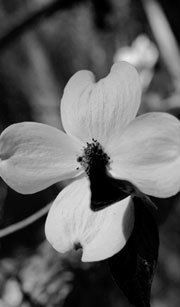 |
||
 |
||

 |
• HOME • GENERAL STORE • NATURAL HERITAGE • HISTORY, CULTURE & CRAFTSMANSHIP |
||||
|
Natural Heritage
• Trees & Shrubs of the Ozarks |
|||||
| Trees & Shrubs Index • Oak • Hickory • Walnut • Catalpa • Loblolly Pine • Red cedar • Elderberry • Sumac • Sassafras • Persimmon • Osage-orange • Mulberry • Witch Hazel • Sarvisberry • Dogwood • Redbud • Crape Myrtle • Mimosa Natural Heritage Index • Fishing • Hunting • Camping • Conservation • Bass Pro Blog • Hills & Hollows • Rivers & Lakes • Springs • Caves • Rocks & Fossils • Trees & Shrubs • Plants & Herbs • Hill Critters • Flyin' Critters • Water Critters • Snakes & Such • Forgotten Critters |
|||

The sumac is native to the Ozarks and the species thrives on dry, compacted soil, making the groves a common sight along roadsides.
Native to North America, Rhus typhina produce clusters of red berries traditionally used to make a late-summer drink (Plate 3).
Various portions of the plant were believed to hold medicinal qualities as well.
Rhus typhina is a short-lived tree species, small in stature with a light, pithy wood structure more closely resembling that of an herbaceous perennial than most trees (Plate 4).
In fact, the sumac tree is in the same family as poison ivy.
It is the leaves of the sumac, however, that attract the most attention. Early in September, sumac turns a most brilliant crimson (Plate 1).
— by Joshua Heston
May 28, 2009
________
Sumac (Rhus typhina)
Size: 10 to 20 feet tall; leaves 16 to 24 inches long.
What to look for: leaves compound, with narrowly lance-shaped, sharply toothed leaflets; leafstalk hairy, twigs covered with velvety hairs; ense clusters of dark red, hairy seeds.
Habitat: old fields, borders of woodlands.
— page 320, Wernett, Susan J., et al. North American Wildlife. The Reader's Digest Association, Inc., 1986.
_______
FROM THE HERBAL COMPENDIUM...
Sumach. Rhus glabra.
Upland Sumach. Smooth Sumach. Pennsylvania Sumach.
Root: Tonic. Astringent. Antiseptic
Berries: Astringent. Refrigerant. Diuretic.
Leaves: Tonic. Astringent. Antiseptic. Diuretic..
Valuable in gonorrhea, leukorrhea, diarrhea, hectic fever, and scrofula. The berries are used in diabetes, bowel complaints, febrile diseases, canker, and sore mouth.
— page 179, Shaker Medicinal Herbs: A Compendium of History, Lore and Uses by Amy Bess Miller
_____
A word of safety: folk remedies on StateoftheOzarks are published for informational purposes only.
These remedies are never intended to cure, treat or mitigate any disease or disease condition.
For questions about disease or disease conditions, consult a qualified healthcare professional.



Rhus typhina photo plates
All photo credits: J. Heston SOTO © Archive.10/19/05, 11/26/08, 05/15/09
November 15-16, 2008